Today in Maine, sustainable seafood delivery is but one option available for consumers to support maintaining healthy fish populations. However, you may still wonder what sustainable seafood is before you order it. Or a source where to buy sustainable fish? And, better yet, what does sustainably sourced mean anyway? Sustainability and sustainable practices are important these days across all sectors of the economy.
Sustainable seafood practices play a vital role in maintaining healthy fish populations by ensuring species reproduce faster than harvest. Sustainability is designed to prevent overfishing that depletes stocks from a particular region. In that regard, it protects species’ habitat and further minimizes the environmental impact on other ocean wildlife. For communities and regions, sustainable seafood practices provide economic and social stability derived from thriving commercial fishing industries. Consumers can support sustainable seafood by simply diversifying their choice of seafood each week.
Sustainability, then, is an investment in the present and the future. As a concept, “sustainably sourced” relates to integrating economically sound yet socially, environmentally, and ethically responsible supply chain practices by companies and organizations. Supporting sustainably sourced seafood ensures products remain viable now and for future generations. But there are even more advantages to supporting sustainable practices.
5 Important Individual Sustainability Practices
1. A Healthy Diet
Many sustainable fish varieties hold exceptional nutritional value. In general, seafood has unquestionable health benefits. It is rich in calcium and phosphorus, provides vitamins like A, B, and D, contains heart-healthy omega-3 fatty acids, is high in protein, and has essential minerals like iron, zinc, iodine, magnesium, selenium, and potassium—such vitamins like A boost immune systems. Sustainable fish options like Hake, a tasty whitefish in the cod family, are rich in minerals like iodine, calcium, zinc, potassium, phosphorus, and magnesium, and a source of vitamin-B12 and B-complex vitamins such as niacin, pyridoxine (B-6), thiamine, and riboflavin. Sustainable shellfish such as clams have high concentrations of B12 and iron and good amounts of vitamin C, potassium, and magnesium.
2. Helps Preserve Ecosystems and Biodiversity
Sustainable fishing practices are essential in maintaining ecosystems and biodiversity. Overall, sustainable fishing practices work to improve and support the health of the oceans. Such practices help reduce overfishing that is damaging habitats and protect vulnerable fish species or fishing stocks from depletion beyond the point of recovery, ensuring future fish populations.
Overfishing has led to the steady decline of fish populations in some areas of the world’s oceans. In other words, to help sustain certain populations, it’s important to know where your fish is sourced before purchase. Haddock serves as a prime example. Where haddock stocks from Iceland to the Baltic Sea have fallen below sustainable levels, stocks from the Georges Bank and the Gulf of Maine have not been overfished. Thus, before purchasing haddock, know where it is caught.
3. Environmental Impact as a Food Source
Sustainable seafood has the lowest negative environmental impact compared to other animal proteins. Compared to land-based animal proteins, i.e., livestock like beef and pork, the carbon footprint of locally sourced, wild-caught seafood is significantly lower. Fish do not require habitat destruction to graze or release greenhouse gases when they feed. Livestock releases nearly 15% of all greenhouse gases on the planet—damaging gases like carbon dioxide, nitrous oxide, fluorinated gases, and especially methane. The consequence of a diet entirely reliant on land-based animal proteins is detrimental to the environment. Substituting part of the red and processed meat in a diet with fish a couple of times a week is a great way to reduce your carbon footprint.
4. Food Security
Thriving fisheries and aquaculture are crucial components of sustainable development and food security. From a practical standpoint, sustainable fishing practices aim to conserve species populations to help maintain healthy stocks. Preventing overfishing and depletion of a given fish population ultimately offers a reliable food source. Fish as a main food and protein source is not only a healthy option for people, but sustainable fishing practices can help with food security.
5. Local Economy
Maine’s seafood scene is a network of locally sourced, responsible fisheries. From trawler to your kitchen table, Maine’s seafood supply chain connects buyers and sellers with high-quality, responsibly harvested seafood directly from the Gulf of Maine. The keyword here is supply chain (see above) consisting of a broadly defined group of stakeholders, ranging from fishermen and women, diggers and seafood dealers to supermarkets and fish markets—all with a dedicated, vested interest in responsibly managing fisheries, offering local and seasonal seafood, harvested from the Gulf of Maine, easily traceable and transparent to consumers. People can purchase directly off the docks or visit a nearby food truck, lobster shack, clam shack, roadside stand, or fish truck vendor, and yes, even have sustainable seafood delivered to their doors.
Order FRESH live lobsters or fresh-picked meat online for delivery directly to your door! We also offer curbside pick-up at our South Portland location if you live locally – call for details and to place your order over the phone. Feel free to contact us— we would be happy to answer any of your questions.
